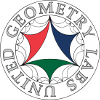Math 639
Geometric Group Theory
Classroom: 4106 Exploratory Hall, Th 7:20-10pm
Professor: Anton Lukyanenko, alukyane@gmu.edu
Office Hours: by appointment, in 4113 Exploratory
Resources
The course will not follow a specific book, though Office hours with a Geometric Group Theorist will contain much of what we will cover.
I will be writing up course notes (last updated April 23). Here are the notes Cigole wrote up, and the Mathematica file for Lecture 7. The final presentation notes are at http://lukyanenko.net/teaching/2020/639/pdf/[lastname].pdf.
All files require a username and password, which will be announced in class. Please do not share them with others.
Course Description
Geometric group theory studies groups using geometry, often by zooming out on relevant graphs or manifolds in order to use analytic techniques. This approach bridges algebra and analysis using geometry, using methods and providing results in all three fields, and has been extremely fruitful starting with Klein’s 1800s Erlangen program and continuing with recent work spearheaded by Gromov and Thurston.
In this survey class, we will take a tour of the topics of geometric group theory. We will start with computational questions about abstract groups given by presentations and relations. We will then observe groups as symmetries of geometric objects including certain graphs, Lie groups, and hyperbolic spaces. This will introduce some local choices in the definitions that we will avoid by zooming out to infinity, leading to new intrinsically-fractal spaces where analysis can come into play. While these spaces are not intrinsically-Euclidean, we will see how useful notions of geometry and analysis can be built up on many of them, and how these spaces also arise outside of geometric group theory.
No prerequisites will be strictly necessary, beyond excitement to see a wide swath of mathematics, as we will quickly discuss all necessary background material as it comes up. In addition to important milestones (e.g. the Mostow Rigidity Theorem and the Banach-Tarksi Paradox), we will discuss famous open conjectures and current research directions.




